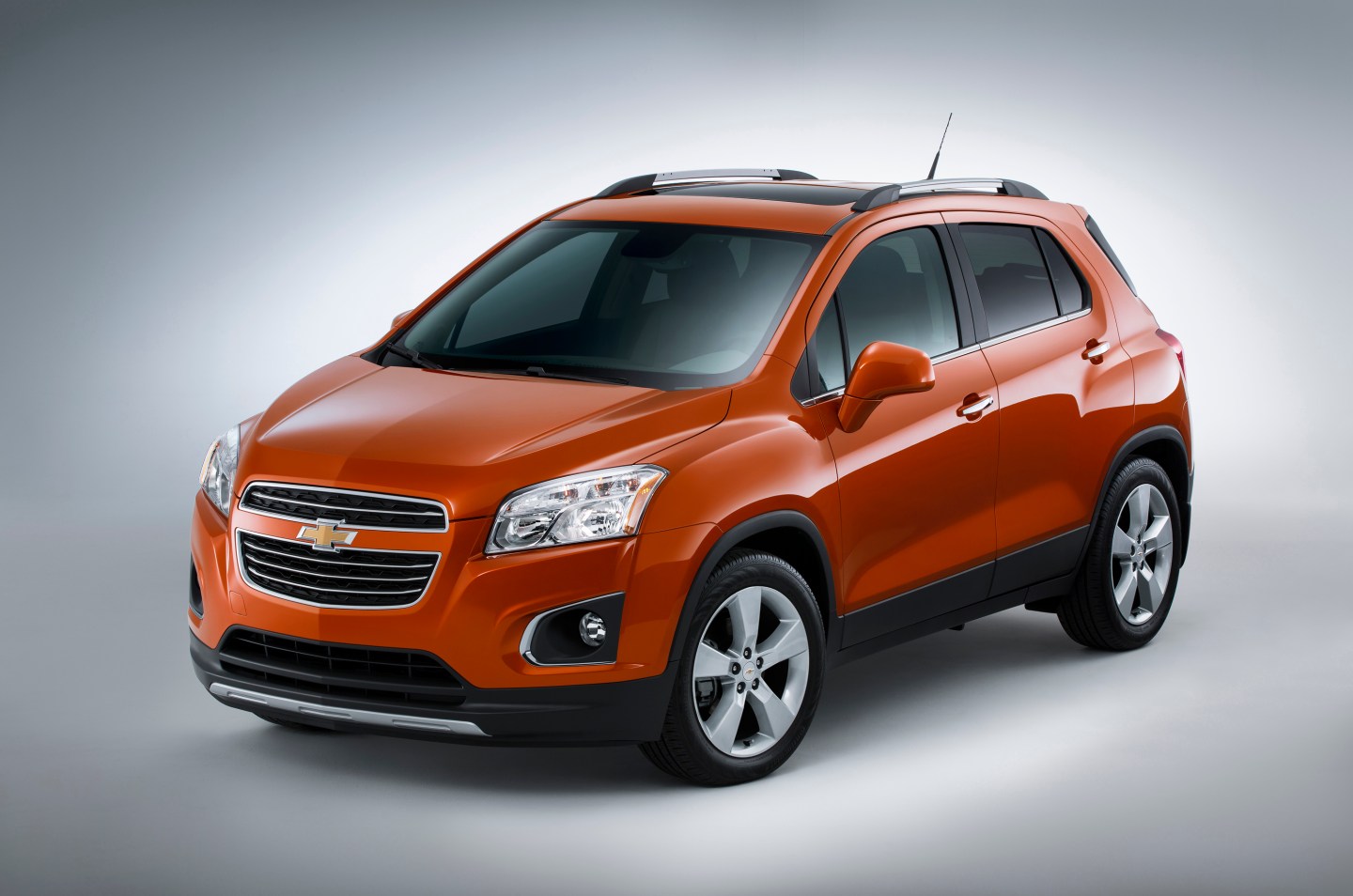Compact SUVs like the Honda CR-V or Ford Escape are the hottest-selling vehicles around. They now account for nearly 11% of the U.S. car market – twice their share of a decade ago, according to Edmunds.com. Small utilities now rank as the fourth most popular segment, behind midsize and compact sedans and large trucks.
Now a subset of that segment, subcompact SUVs, is poised to grow even faster. Their names—Trax, Renegade, HR-V—are unfamiliar today but it won’t be long until they are as well known as Impala, Camry, and Mustang. Think of them as 21st century versions of the classic sport utility. “Many people like the ride height and utility of an SUV but are often put off by the cost,” says Jessica Caldwell, Senior Analyst for Edmunds.com, “This segment brings the price range down further so that even true entry-level buyers have a larger selection to choose from.
In the arcane lingo of the auto industry, compact SUVs compete in the “C “segment, and subcompacts, which are a size smaller, compete in the “B” segment. If Hollywood were planning a film on the market upheaval they will cause, it could be called Attack of the Killer B’s.
Manufacturers are outdoing themselves in a race to bring their particular visions for this segment to market. Honda, Chevy (GM), and Jeep (FCA) are getting ready to launch their entries by early next year. Mazda plans to unveil a concept at the Los Angeles Auto Show next month while Toyota and Hyundai, in close pursuit, finalize their plans. Only Ford (F) among the major automakers appears to biding its time in the U.S while it monitors the performance of a small crossover it is selling overseas.
The surging popularity of these vehicles comes as the auto industry finishes one of its strongest years in decades. New-vehicle retail sales are expected to reach their highest level for the month of October since 2004, according to a monthly sales forecast developed jointly by J.D. Power and LMC Automotive. You can expect the small crossovers to cannibalize sales of their larger brethren next year but their overall impact on industry volume should be additive. “Due to the size and price of subcompact SUVs, there should be an increasing amount of cross-shopping against compact cars and smaller SUVs,” says Edmunds.com’s Caldwell.
“This segment brings the price range down further so that even true entry-level buyers have a larger selection to choose from.”
The growth in popularity of these small crossovers comes as consumers more closely coordinate vehicle size to their actual driving needs. Piloting a giant Suburban or Navigator to the grocery store is no longer seen as smart or necessary. While gasoline prices have fallen sharply this year, they aren’t expected to remain depressed indefinitely.
Subcompact SUVs offer cargo space and utility, decent fuel economy, and a commanding driving position with a good view of the road, all for a reasonable price. Designed properly, subcompact SUVS can pack a lot into a small space. Although the Chevy Trax, coming to dealers in January, is nearly two feet shorter than the compact Chevy Equinox, currently Chevy’s smallest crossover, it provides three quarters of the Equinox’s cargo space. And thanks to a front passenger seat that folds flat, it can handle objects as long as eight feet.
Growth in the number of B segment entries has largely sneaked in under the radar. Since profitability is skimpy, manufacturers try to avoid spending money on splashy introductions or expensive marketing schemes. Nor does the enthusiast press pay much attention, because the cars are designed for practicality rather than performance.
Testing the popular Buick Encore, Car and Driver described the all-wheel-drive version’s 10-second trip to 60 mph “glacial” and complained about its transmission. “Shifts take as long as a Super Bowl commercial break. There’s a rocker switch atop the shift lever for manual shifting , but most drivers would probably used it more if it tied their shoelaces together.”
Despite the lukewarm reviews, Encore has been a surprising success—all the more so because it is a premium entry costing as much as $32,000 competing against more popular-priced models. Through September, Encore had recorded sales of 36,433 units, enabling Buick to show impressive gains over its 2013 results.
Some of the invisibility is also due to misguided messaging. Ads suggest that small SUVs are popular among 30-year-old couples who have families or are planning one. But research by Edmunds.com found that nearly half the buyers are over 55 and you don’t see gray hair very often in car commercials. One of the timeless rules of the car business is that while you can sell a young man’s car to an old man, you can’t do the reverse.
While subcompact SUVs rank high in customer appeal, they also represent a valuable variable for automakers trying to reduce engineering costs and develop scale efficiencies so they can compete effectively in overseas markets. The Encore, considered to be the first true subcompact SUV, was engineered by Opel in Germany, where it is sold as the Opel Mokka. (The Mokka name derives from the small, round coffee beans of the Coffea Arabica variety). But the Encore is built in South Korea. Other versions of it are built in Shanghai, Zaragoza, Spain, and. Finally, in San Luis Potosi, Mexico, where it will be branded as the Chevrolet Trax.
If this all sounds complex, it is. Sometimes the best intentions go astray. Honda constructed a new assembly plant in Mexico to build the Fit hatchback and a subcompact SUV known as the HR-V. But the Fit has been recalled five times, causing Honda executives to endure a 20% pay cut, and the launch of the HR-V has been delayed until next year due to quality problems. Honda has complained about parts being stolen from its cars while they are in transit by train between the Mexican plant and U.S. markets.
Much attention will be paid to the imminent launch of the Jeep Renegade. The Jeep brand is enjoying the greatest popularity in its history but the Renegade represents a departure because it is built in Italy from a Fiat platform, Jeep plans to sell the Renegade in more than 100 countries, and most of its sales are expected to come from outside the U.S. “I think the segment is going to grow very, very fast,” Jeep global boss Mike Manley told USA Today.
The release of October sales results will likely show another surge in popularity for big pickups and SUVs, driven by the surprising availability of cheap gasoline. So it may take awhile for the Killer B’s to find their place in the minds of consumers. But given the increasing acceptance of compact crossovers, it shouldn’t be long before their smaller brethren—Trax, Renegade, HR-V and all the rest—are equally well-established.












